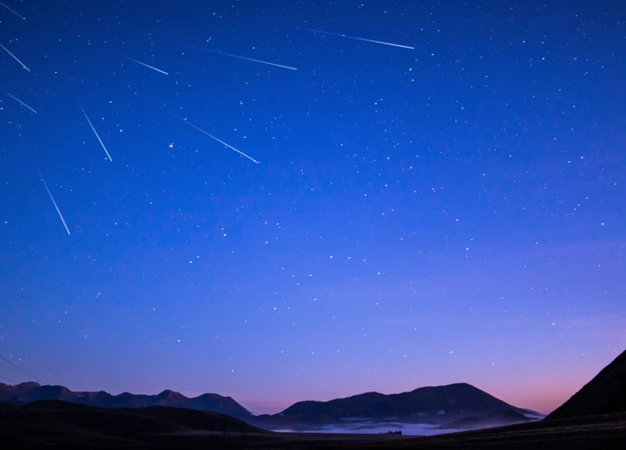Have you ever gazed up at the night sky and been captivated by the beauty of a meteor shower? If so, you’re not alone. Meteor showers are a breathtaking natural phenomenon that occur when our planet passes through a trail of debris left behind by a comet or asteroid. But with so many meteor showers happening throughout the year, how do you find the best viewing spots to witness these celestial fireworks? In this article, we will explore step-by-step how to find the perfect location for meteor shower viewing, taking into consideration factors such as light pollution levels, weather conditions, and accessibility. So grab your telescope, dress warmly, and get ready for an unforgettable experience!
Contents
- Understanding Meteor Showers
- Factors to Consider
- Research and Preparation
- Local Observatories and Astronomy Groups
- Scouting Potential Locations
- Planning for Optimal Viewing
- Essential Equipment
- Tips for Enjoying the Experience
- Conclusion
-
Frequently Asked Questions
- What causes a meteor shower?
- Why do meteor showers have different names?
- How often do meteor showers occur?
- Can you see meteor showers from anywhere on Earth?
- Do you need special equipment to view a meteor shower?
- What are the best conditions for viewing a meteor shower?
- How long does a meteor shower typically last?
- Are meteor showers dangerous?
- What is the best time of night to view a meteor shower?
- Can I photograph a meteor shower?
- References
-
Frequently Asked Questions
- What are the best months to view meteor showers?
- How often do meteor showers occur?
- Can meteor showers be seen from anywhere in the world?
- What is light pollution and how does it affect meteor shower viewing?
- Are there specific weather conditions that are ideal for viewing meteor showers?
- Why is accessibility and safety important when choosing a viewing spot?
- What are some reputable astronomical resources for researching meteor showers?
- How can mobile apps be helpful for finding the best viewing spots for meteor showers?
- Why are rural areas and dark-sky parks recommended for optimal meteor shower viewing?
- What significance does moon phase and rise/set times have on meteor shower viewing?
- References
- Read More
Understanding Meteor Showers
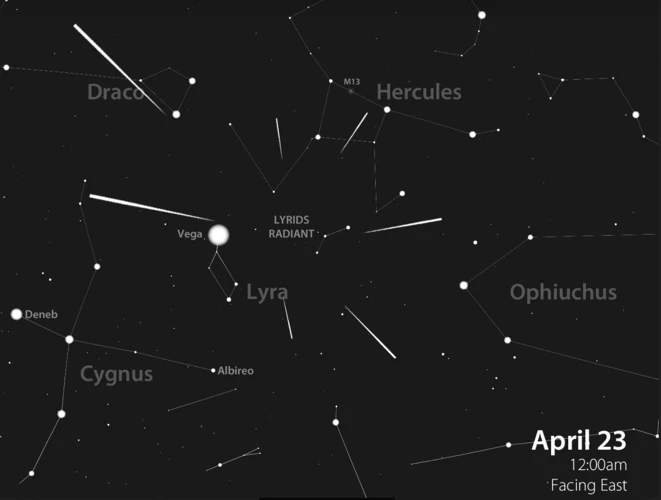
Meteor showers are a captivating display of celestial magic, but understanding their nature adds an extra layer of wonder. What are meteor showers? Meteor showers occur when Earth passes through a trail of debris left behind by a comet or asteroid. These tiny particles, typically no larger than a grain of sand, enter Earth’s atmosphere at high speeds, creating streaks of light as they burn up due to friction. When and where do meteor showers occur? Meteor showers happen throughout the year, but certain periods offer more spectacular displays. The timing of meteor showers is determined by the specific orbit of the parent comet or asteroid. Some well-known annual meteor showers include the Perseids in August and the Geminids in December. On occasion, rare meteor outbursts or storms can occur, resulting in significantly higher meteor rates. To fully appreciate the beauty of meteor showers, it’s important to keep an eye out for upcoming meteor shower dates and locations. (Source: NASA)
What are Meteor Showers?
Meteor showers are a mesmerizing celestial phenomenon that occurs when Earth traverses through the path of debris left behind by a comet or asteroid. These particles, which are no larger than a grain of sand, enter Earth’s atmosphere at high speeds, creating streaks of light known as meteors. The meteors are visible to us as they burn up and disintegrate due to the intense friction generated by their high-speed entry.
Comets and asteroids, as they orbit the sun, shed small fragments along their path due to factors such as heat or collisions with other celestial bodies. When Earth crosses paths with these trails of debris, our planet’s gravity pulls the particles towards it. As a result, the tiny particles enter our atmosphere and ignite as they encounter the atmospheric gases. The process of burning up produces the luminous streaks we observe as shooting stars or meteors during a meteor shower.
Meteoroid, Meteor, and Meteorite:
The journey of debris begins with a meteoroid, which refers to the small particle embedded in the trail. When the particle enters Earth’s atmosphere and becomes visible, it is called a meteor. If any part of the debris manages to survive the journey through the atmosphere and lands on Earth’s surface, it is then called a meteorite.
Factors to Consider
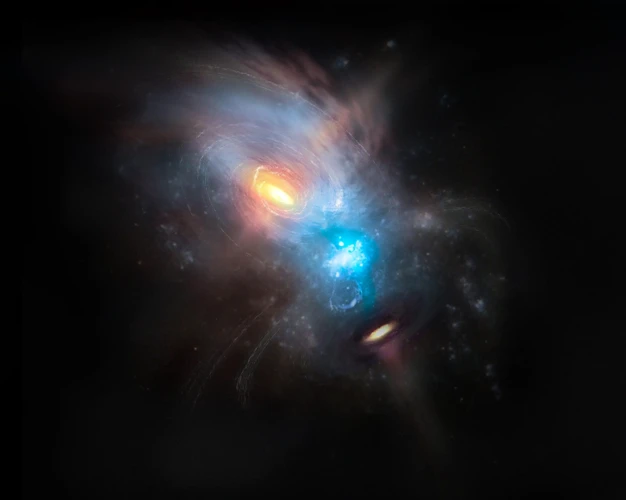
When planning to witness a meteor shower, several factors come into play to ensure an optimal viewing experience. Light pollution levels greatly affect visibility, so finding a location away from city lights is crucial. The darker the sky, the more meteors you’ll be able to see. Additionally, weather conditions play a significant role. Cloud cover or precipitation can obstruct your view, so it’s important to choose a night with clear skies. Finally, accessibility and safety should not be overlooked. Look for viewing locations that are easily accessible and offer a safe environment for stargazing. Avoid areas with potential hazards, such as steep cliffs or dense forests, and consider factors like parking availability and the proximity of restroom facilities. By considering these factors, you can increase your chances of a memorable meteor shower experience. (Source: Influence of Planetary Alignments on Earth Weather)
Light Pollution Levels
When it comes to finding the best viewing spots for meteor showers, considering light pollution levels is crucial. Light pollution refers to the excessive or misdirected artificial light that fills the night sky, making it difficult to see celestial objects clearly. To maximize your meteor shower experience, follow these tips:
- Choose Dark-Sky Areas: Look for locations away from urban centers and heavily populated areas, as they tend to have higher levels of light pollution. Opt for remote rural areas or designated Dark-Sky Parks, where measures are taken to minimize light pollution.
- Check Light Pollution Maps: Utilize online light pollution maps that provide data about the luminosity of different areas. These maps can help you identify regions with low light pollution, giving you a better chance of enjoying the meteor shower without interference.
- Avoid Glare and Artificial Lights: Once you find a potential viewing spot, make sure to position yourself away from bright lights, such as street lamps, buildings, or car headlights. These lights can hinder your ability to see faint meteors streaking across the sky.
By considering light pollution levels and selecting a location with minimal interference, you can enhance your chances of witnessing a spectacular meteor shower in all its celestial glory. Remember to choose a spot that allows you to fully immerse yourself in the darkness of the night sky. (Source: International Dark-Sky Association)
Weather Conditions
Weather conditions play a crucial role in the success of observing meteor showers. Clear skies offer optimal viewing opportunities, allowing you to witness the full splendor of shooting stars streaking across the night sky. Cloud cover can obstruct your view and make it challenging to spot meteors. It’s essential to check the weather forecast for your desired viewing location to ensure favorable conditions. Cloud-free and moonless nights are ideal, as they maximize visibility. Additionally, pay attention to other weather factors such as humidity and wind. High humidity can create haze, reducing visibility, while strong winds can make it uncomfortable to stay outdoors for extended periods. Keeping an eye on the weather forecast in the days leading up to the meteor shower will help you plan accordingly and increase your chances of a successful viewing experience. Remember, it’s always a good idea to have a backup location in mind if the weather doesn’t cooperate. (Source: The Weather Channel)
Accessibility and Safety
When considering the best viewing spots for meteor showers, accessibility and safety are crucial factors to keep in mind. It’s important to choose a location that is easily accessible, especially if you’re planning to bring equipment like telescopes or cameras. Look for areas with good road access or parking facilities nearby. Additionally, consider the safety of the location. Avoid areas that may present hazards, such as steep cliffs or unstable terrain. It’s also essential to be mindful of your personal safety, especially if you plan to stargaze alone or in secluded areas. Consider visiting public places where other astronomy enthusiasts might gather or joining local astronomy groups for organized viewing events. Sharing the experience with others not only enhances safety but also provides opportunities for learning and exchanging knowledge. Remember to prioritize safety by informing someone of your plans and always being prepared with essentials like a first aid kit and flashlight. By prioritizing accessibility and safety, you can ensure a memorable and secure meteor shower viewing experience. (Source: Secrets of Planetary Alignments in Ancient Art and Architecture)
Research and Preparation
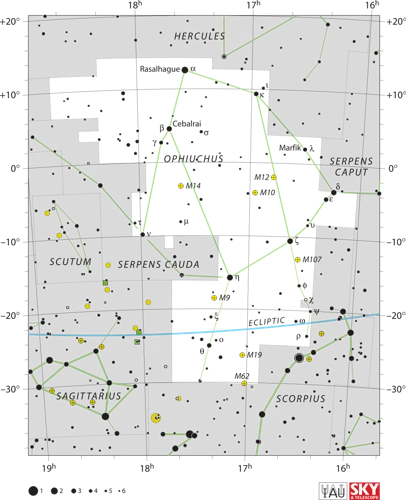
When planning to witness a meteor shower, thorough research and preparation are key to maximizing your viewing experience. Consulting astronomical resources such as online databases, books, and magazines will provide valuable information on upcoming meteor shower dates, peak times, and expected meteor rates. Additionally, utilizing mobile apps specifically designed for astronomy enthusiasts can be incredibly helpful in identifying the best viewing spots and providing real-time updates on meteor activity. It is also worth considering joining local observatories or astronomy groups, as they often organize group viewing events and can provide expert guidance on finding prime locations for meteor shower observation. Taking the time to gather knowledge and make necessary preparations will ensure that you are well-equipped and ready to witness the awe-inspiring beauty of a meteor shower.
Consulting Astronomical Resources
Consulting astronomical resources is a crucial step in finding the best viewing spots for meteor showers. These resources provide valuable information about upcoming meteor showers, their peak times, and the best locations for optimal viewing. Here are a few resources to consider:
1. Astronomy Websites: Websites like Space.com, NASA’s meteor shower calendar, and the International Meteor Organization (IMO) offer comprehensive information about meteor showers. They provide details such as the expected peak activity, the radiant (the point in the sky from which the meteors appear to originate), and viewing tips. These websites are updated regularly, ensuring you have up-to-date information at your fingertips.
2. Astronomy Apps: There are several smartphone apps available that can help you track and identify meteor showers. Apps like SkySafari, Star Walk, and Stellarium provide real-time stargazing information, including meteor shower predictions and visibility conditions. Some apps even offer augmented reality features, allowing you to point your phone towards the sky and see meteor showers mapped out in front of you.
3. Astronomy Clubs and Societies: Local astronomy clubs and societies can be a valuable resource for finding the best viewing spots in your area. These groups often organize viewing events and have experienced astronomers who can provide guidance and recommendations. They may also have access to dark-sky locations or observatories that offer ideal conditions for meteor shower viewing.
By consulting these astronomical resources, you can stay informed about upcoming meteor showers and plan your viewing experience accordingly. Whether you’re a novice stargazer or a seasoned astronomer, these resources will enhance your knowledge and help you make the most of this awe-inspiring celestial phenomenon. (Source: Space.com)
Utilizing Mobile Apps
Utilizing mobile apps can greatly enhance your experience of watching meteor showers. There are numerous astronomy apps available that provide valuable information and features to assist you in finding the best viewing spots. These apps utilize your device’s GPS and compass to provide real-time data on celestial events, including meteor showers. Some apps even incorporate augmented reality to overlay the night sky with named stars, constellations, and other celestial objects, helping you to identify and track meteor showers. One popular app is Sky Guide, which allows you to input your location and provides a comprehensive view of the night sky, including meteor shower radiants and peak times. Another useful app is Meteor Shower Calendar, which provides a detailed schedule of upcoming meteor showers and their intensity. By utilizing these mobile apps, you can access valuable information and navigate the night sky with ease, increasing your chances of witnessing a spectacular meteor shower display.
Local Observatories and Astronomy Groups
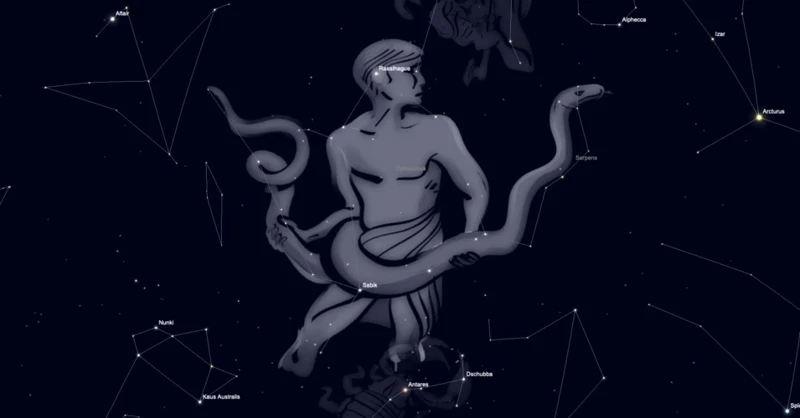
Finding local observatories and astronomy groups can greatly enhance your meteor shower viewing experience. These organizations are filled with passionate astronomers who have extensive knowledge of the night sky and can provide valuable insights and guidance. Here are a few steps you can take to connect with local observatories and astronomy groups:
1. Research: Start by conducting a quick online search for observatories and astronomy groups in your area. Make a list of the ones that are easily accessible to you.
2. Email or Call: Reach out to the observatories and astronomy groups on your list. Introduce yourself and express your interest in meteor shower viewing. Inquire about any organized events, viewing parties, or workshops they may have planned during meteor shower season.
3. Attend Meetings: Many astronomy groups hold regular meetings where members gather to discuss astronomical events and share their knowledge. Attend these meetings to meet fellow astronomy enthusiasts, learn from experienced observers, and get valuable tips on finding the best viewing spots for meteor showers.
4. Join Field Trips: Some observatories and astronomy groups organize field trips to locations with optimal stargazing conditions. These trips can be a fantastic opportunity to have an immersive experience and learn from knowledgeable experts. Keep an eye out for any upcoming field trips related to meteor shower viewing.
5. Participate in Citizen Science Projects: Many astronomy groups actively participate in citizen science projects where members contribute valuable data for research purposes. Engaging in such projects can deepen your understanding of meteor showers and allow you to contribute to scientific studies.
Remember to approach these groups with enthusiasm and curiosity. Being part of a local observatory or astronomy group can open doors to exciting opportunities, expand your knowledge, and connect you with like-minded individuals who share your passion for stargazing. (Source: NASA)
Scouting Potential Locations
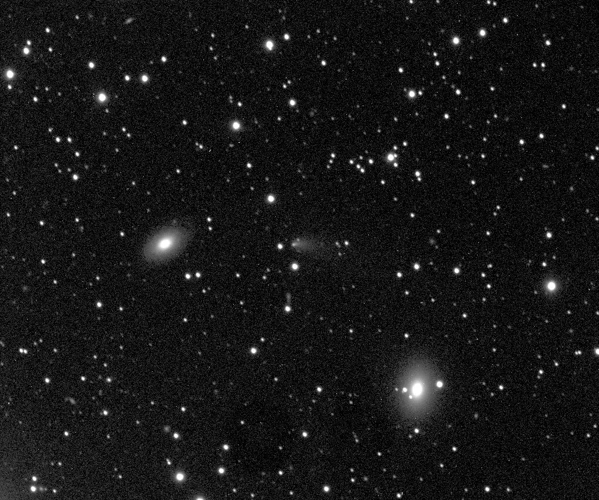
To find the best viewing spots for meteor showers, scouting potential locations is crucial. Here are some areas to consider:
Rural Areas and Dark-Sky Parks: These remote locations, away from city lights and light pollution, offer optimal conditions for observing meteor showers. Dark-sky parks, designated areas with minimal light pollution, provide an immersive stargazing experience.
Mountain Ranges and Elevated Spots: Climbing to higher altitudes, such as mountain ranges or hills, can provide a clearer view of the night sky. Being above any nearby obstructions enhances visibility and allows for an unobstructed view of meteor showers.
Beaches and Coastlines: Coastal areas often offer wide-open horizons, perfect for sky-watching. Beaches provide a flat, expansive space with minimal light pollution, giving you an excellent vantage point to witness the meteor shower spectacle.
Consider these locations while scouting for the ideal viewing spot and make sure to research if any permits or fees are required. Keep in mind that accessibility, safety, and local regulations are important factors to consider when selecting your meteor shower viewing location.
Rural Areas and Dark-Sky Parks
are ideal locations for meteor shower viewing due to their minimal light pollution levels and expansive vistas. Away from the bright lights of cities and towns, rural areas offer a clearer and darker night sky, providing optimal conditions for observing meteor showers. Look for areas that are remote and have low population densities, as these tend to have less artificial light interference. Additionally, dark-sky parks are designated areas specifically established to preserve the natural darkness of the night sky. These parks often have regulations in place to minimize light pollution, making them excellent choices for meteor shower viewing. When selecting a rural area or dark-sky park, consider factors such as accessibility and safety. Ensure that your chosen location is easily reachable and has proper facilities like parking, restrooms, and designated viewing areas. Check if any permits or reservations are required beforehand, especially during peak meteor shower events when these areas might experience high visitor traffic. By opting for rural areas and dark-sky parks, you can immerse yourself in the tranquility of nature while marveling at the wonders of the meteor shower above.
Mountain Ranges and Elevated Spots
When it comes to finding the best viewing spots for meteor showers, mountain ranges and elevated spots can offer some excellent opportunities. Being higher above sea level means less atmospheric interference, resulting in clearer and darker skies. Mountainous regions often have lower light pollution levels compared to urban areas, enhancing visibility of meteor showers. Additionally, the elevation provides a wider and unobstructed view of the sky, allowing you to see meteors streak across a larger portion of the celestial canvas. Look for popular mountain ranges or hills in your area, national parks, or even observation decks on tall buildings. Just make sure the chosen spot is accessible and safe, taking into consideration factors such as parking, hiking trails, and weather conditions. Remember to bring warm clothing as temperatures can drop significantly at higher elevations, especially during the nighttime. So, find a mountain range, climb to an elevated spot, and prepare to be mesmerized as the meteors illuminate the night sky.
Beaches and Coastlines
When it comes to finding the best viewing spots for meteor showers, beaches and coastlines can offer a unique and picturesque experience. Here are some reasons why these locations are worth considering:
| Advantages | Considerations |
|---|---|
|
|
Planning for Optimal Viewing
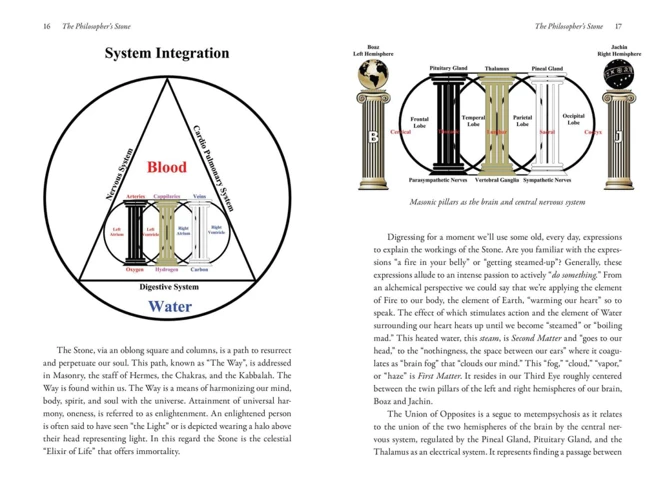
When it comes to planning for optimal viewing of meteor showers, there are a few key factors to consider. Checking the moon phase and rise/set times is crucial, as a bright moon can wash out the fainter meteors. Aim to view during a new moon or when the moon has set to maximize visibility. Understanding meteor shower radiants is also important, as meteors will appear to radiate from a specific point in the sky. Research the radiant location of the meteor shower you are interested in to know where to direct your gaze. Choosing the best viewing time is essential, as meteor shower activity can vary throughout the night. Peak times are often during the predawn hours when the radiant is high in the sky. By taking these factors into account, you can plan your meteor shower viewing to ensure the best chance of witnessing a spectacular celestial event.
Checking Moon Phase and Rise/Set Times
Checking Moon Phase and Rise/Set Times is crucial for maximizing your experience of meteor showers. The moon’s brightness can significantly impact the visibility of meteors, so it’s essential to plan your viewing around moon phases. First, determine the moon phase by consulting a lunar calendar or using a moon phase app. Ideally, you want to view meteor showers during a new moon or when the moon is in its crescent phase, as the sky will be darker and meteors will be more visible. Next, find the moonrise and moonset times for your location using online resources or specific smartphone apps. Knowing when the moon will rise and set will help you plan your observation session accordingly. Arrive at your chosen viewing spot well in advance of the moonrise, allowing your eyes to adjust to the darkness before the show begins. By carefully considering moon phase and rise/set times, you can ensure optimal conditions for enjoying the celestial spectacle of meteor showers.
Understanding Meteor Shower Radiants
When it comes to observing meteor showers, understanding the concept of meteor shower radiants is crucial. The radiant is the point in the sky from which the meteors appear to originate. Each meteor shower has its own radiant, which is determined by the path of the parent comet or asteroid. It is important to know the location of the radiant in order to have the best chance of seeing the most meteors. Here are a few key points to keep in mind:
1. Research the Radiant: Before heading out to watch a meteor shower, conduct some research to determine the location of the radiant. Astronomical resources and mobile apps can provide you with precise details about the radiant’s position in the sky during the specific meteor shower event.
2. Use Sky Maps and Charts: Sky maps and charts can help you identify the radiant’s position accurately. These maps provide a visual representation of the night sky, including the position of the radiant. You can easily find printable sky maps online or download mobile apps that offer interactive sky charts.
3. Focus on the Radiant’s Direction: Once you have located the radiant, focus your attention on that particular area of the sky. While meteors can appear anywhere in the sky, they will trace back to the radiant. By keeping your gaze fixed on the radiant’s direction, you increase your chances of catching more meteors.
Remember, meteor showers can produce anywhere from a few meteors per hour to dozens or even hundreds at their peak. Understanding the radiant’s position will help you optimize your viewing experience and maximize your chances of witnessing nature’s cosmic fireworks. (Source: American Meteor Society)
Choosing the Best Viewing Time
When it comes to experiencing the full spectacle of a meteor shower, choosing the best viewing time is crucial. Here are some factors to consider when determining the optimal time to witness shooting stars in all their glory:
- Peak Activity: Research and find out when the meteor shower is expected to reach its peak. During this time, the rate of meteors will be at its highest, providing a greater chance of catching a glimpse of these celestial wonders. Astronomical resources and reputable meteor shower prediction websites often provide estimated peak times for specific meteor showers.
- Dark Sky Conditions: Look for a time when the sky is at its darkest. This typically involves avoiding moonlit nights, as the bright moonlight can wash out the fainter meteors. Check the lunar phase and rise/set times to plan your meteor shower viewing when the moon is not as dominant in the sky.
- Clear Weather: Keep an eye on the weather forecast leading up to the anticipated meteor shower. Cloudy or overcast conditions can obstruct your view of the night sky and make meteor spotting difficult. Opt for a night with clear skies and minimal cloud cover for the best viewing conditions.
- Time of Night: Consider the time of night when the shower’s radiant point will be highest in the sky. The radiant point is the apparent point from which the meteors originate. Typically, the radiant point rises higher in the sky as the night progresses, providing a better viewing angle. Plan to stay up later into the night for an improved chance of spotting more meteors.
By carefully considering these factors and choosing the best viewing time, you can enhance your chances of witnessing a meteor shower at its most awe-inspiring moments. Remember, patience and a willingness to spend time under the night sky are key to experiencing the magic of meteor showers.
Essential Equipment
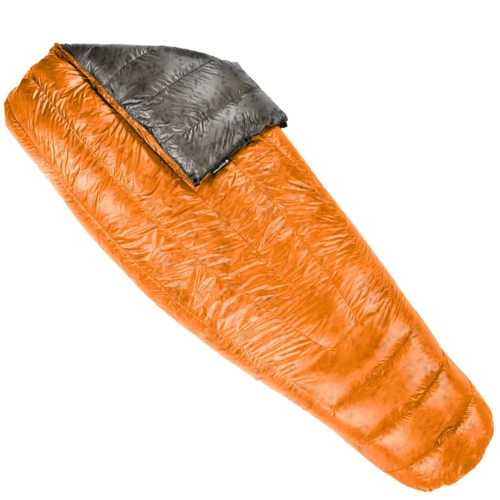
To make the most of your meteor shower experience, it’s essential to come prepared with the right equipment. Binoculars and telescopes can enhance your viewing by allowing you to get a closer look at meteors and other celestial objects. Binoculars provide a wider field of view, making them perfect for capturing the entire meteor shower spectacle. Telescopes, on the other hand, offer more detailed views of individual meteors and can be particularly rewarding for avid stargazers. Cameras and tripods are ideal for capturing stunning photographs of meteor showers. A camera with manual settings allows you to adjust exposure and focus, while a sturdy tripod ensures steady shots and eliminates camera shake. Lastly, don’t forget to bring comfortable seating and warm clothing. Meteor showers can be a long affair, so having a comfortable and cozy seating setup is crucial. Additionally, dressing in layers and bringing blankets or jackets will keep you warm during those late-night stargazing sessions. With the right equipment, you’ll be ready to capture and cherish the mesmerizing beauty of meteor showers.
Binoculars and Telescopes
Binoculars and telescopes are essential equipment for enhancing your viewing experience during a meteor shower. Here are some key points to consider when choosing and using binoculars or telescopes:
- Choosing the right magnification: Opt for binoculars or telescopes with moderate magnification, as excessively high magnification can make it difficult to track meteors. A range of 7x to 10x magnification is generally recommended for binoculars.
- Aperture size: The aperture size, or the diameter of the objective lens or mirror, determines the amount of light gathered. Larger aperture sizes allow for brighter and clearer views of meteors. Consider a telescope with an aperture of at least 4 inches (or 100mm).
- Stability: Stabilizing your binoculars or telescope is crucial for minimizing image shake and ensuring steady views of meteors. Use a tripod or mount specifically designed for your equipment.
- Field of view: A wider field of view can be advantageous when observing meteor showers, as meteors streak across the sky quickly. Binoculars with a wide field of view allow you to capture a larger portion of the sky, increasing your chances of spotting more meteors.
- Filters and adapters: Consider using a light pollution filter to enhance image contrast and reduce the effects of light pollution. Additionally, adapters can be used to attach your smartphone or camera to your telescope, allowing you to capture stunning photographs of the meteor shower.
- Practice and familiarization: It’s important to practice using your binoculars or telescope before the meteor shower to become familiar with their operation and settings. This will help you optimize your viewing experience and make adjustments quickly.
With the right binoculars or telescope, you can bring the meteors closer and truly appreciate their beauty and intricacy. Remember to adjust your eyes to the darkness and be patient as you scan the sky for the mesmerizing celestial display.
Camera and Tripod
When it comes to capturing the beauty of meteor showers, having the right equipment is essential. Here are some key considerations when it comes to camera and tripod:
1. Camera: Invest in a camera with manual settings that allow you to adjust the exposure time, aperture, and ISO. A DSLR or mirrorless camera is ideal for capturing the light trails left by meteors. Wide-angle lenses with a low focal length (e.g., 14mm or 24mm) can capture a larger portion of the night sky, increasing your chances of capturing a meteor. Consider using a remote shutter release or intervalometer to minimize camera shake.
2. Tripod: A sturdy tripod is crucial for keeping your camera steady during long exposures. Look for a tripod with adjustable legs and a ball head that allows for smooth movements and positioning. Ensure that the tripod is capable of supporting the weight of your camera and lens. To further reduce vibrations, use a remote shutter release or set a timer delay to avoid pressing the camera button directly.
3. Additional Accessories: Consider using a lens hood or shade to reduce lens flare caused by nearby artificial lights. A lens with a wide aperture (e.g., f/2.8 or wider) can help capture more light and make faint meteors more visible. If possible, bring spare batteries, memory cards, and a lens cloth to ensure uninterrupted shooting.
Remember to familiarize yourself with your camera’s manual settings and practice shooting in low-light conditions beforehand. Experiment with various exposure times, ISO settings, and apertures to find the optimal settings for capturing meteor showers. And don’t forget to enjoy the experience while capturing stunning images of these celestial wonders!
Comfortable Seating and Warm Clothing
When preparing for a meteor shower viewing, comfort is key. To fully enjoy the experience, make sure to have comfortable seating and warm clothing to stay cozy during the nighttime observation. Bring a comfortable chair or blanket to relax on as you gaze up at the sky for extended periods of time. A reclining lawn chair or a camping chair with adjustable positions would be ideal for optimal comfort. Layer your clothing to stay warm throughout the night, as temperatures can drop significantly during meteor showers. Consider wearing thermal or insulated clothing, along with a warm hat, gloves, and socks. It’s also important to wear sturdy shoes or boots, especially if you’re venturing to rugged terrain or hiking to a viewing spot. Don’t forget to bring a blanket or sleeping bag to wrap yourself in for extra warmth. By ensuring that you have comfortable seating and warm clothing, you’ll be able to fully immerse yourself in the meteor shower experience without discomfort or distraction.
Tips for Enjoying the Experience

To make the most out of your meteor shower experience, here are some tips to keep in mind. First, pack some snacks and beverages to keep yourself energized and hydrated during the long night of stargazing. It’s also essential to use red light instead of bright white light to preserve your night vision. Red light doesn’t disrupt your eyes’ ability to adjust to the darkness, allowing you to see more meteors streak across the sky. Additionally, don’t forget to keep an eye on the skies. While meteor showers have peak activity times, meteors can still appear sporadically before and after those times, so be ready for surprise sightings. Remember to dress warmly, bring a comfortable blanket or chair, and enjoy the show!
Bring Snacks and Beverages
Bring Snacks and Beverages: When planning to spend a night observing meteor showers, it’s essential to bring along snacks and beverages to keep yourself energized and hydrated. Spending hours under the stars can build up an appetite, so packing easy-to-eat and non-messy snacks is a must. Opt for items like granola bars, trail mix, or pre-cut fruits that provide a quick boost of energy. As for beverages, it’s crucial to stay hydrated throughout the night, especially during warmer months. Carry a reusable water bottle filled with your favorite drink to quench your thirst. Consider packing warm beverages like hot chocolate or tea in a thermos if you’ll be stargazing during colder months. Remember that staying comfortable and nourished will enhance your overall experience of watching meteor showers. (Source: Astronomy.com)
Use Red Light to Preserve Night Vision
Preserving your night vision is crucial for fully experiencing the wonders of a meteor shower. When we look at objects in low-light conditions, our eyes gradually adjust to the darkness, allowing us to see fainter objects. However, using white light sources, such as flashlights or smartphones, can disrupt this adjustment process and cause temporary blindness. To avoid this, switch to a red light source instead. Red light has a longer wavelength and lower energy than other colors in the visible spectrum, making it less likely to disrupt your night vision. You can use a red LED flashlight, a headlamp with a red filter, or even cover your white light source with red cellophane or tissue paper. This way, you’ll still be able to read maps or find your way around in the dark without compromising your ability to see faint meteors streaking across the sky. Remember, once your eyes are fully adjusted to the darkness, try to avoid looking at bright sources of light, as it can take several minutes for your night vision to fully recover.
Keep an Eye on the Skies
To fully immerse yourself in the meteor shower experience, it’s crucial to keep an eye on the skies throughout the event. Here are some important tips to enhance your meteor watching adventure:
- Stay alert: Meteor showers can be unpredictable, with meteors appearing at any time and from any direction in the sky. Keep your gaze fixed on the heavens and be ready to spot those fleeting streaks of light.
- Find a comfortable position: Bring a reclining chair, blanket, or sleeping bag to ensure you can lie back and relax while scanning the skies. This will help you avoid neck strain and allow you to gaze upwards for extended periods.
- Use your peripheral vision: Instead of focusing solely on one spot in the sky, try to widen your field of view. Peripheral vision is excellent at detecting movement, so you’re more likely to catch meteors in your side vision.
- Be patient: Meteor showers can have lulls or periods of increased activity. Don’t be disheartened if you don’t see meteors right away. Give yourself ample time, at least 30 minutes to an hour, to allow your eyes to adjust and for the shower to intensify.
- Look for fireballs: Fireballs, or exceptionally bright meteors, can be particularly thrilling to witness. These dazzling displays are caused by larger meteoroids that create a more brilliant and long-lasting streak across the sky. Keep an extra keen eye out for these magnificent sights.
- Enjoy the entire sky: While meteor showers typically have a radiant point where the meteors seem to originate, it’s essential to scan the entire sky. Some meteors can shoot across vast distances, so don’t limit yourself to just one area. Let your eyes explore the entire celestial canvas.
By keeping these tips in mind and staying vigilant, you’ll maximize your chances of experiencing the awe-inspiring beauty of meteor showers. Remember to be patient, stay comfortable, and savor every moment as the shooting stars dance across the night sky.
Conclusion

Witnessing a meteor shower is a truly awe-inspiring experience that connects us with the vastness of the universe. By following the steps outlined in this article, you can find the best viewing spots for meteor showers and maximize your chances of enjoying the celestial spectacle. Remember to consider factors like light pollution levels, weather conditions, and accessibility when scouting for potential locations. Utilize astronomical resources, mobile apps, and local observatories to gather information and plan your viewing strategy. Whether you choose a rural area, a mountain range, or a beach, ensure you have a clear view of the sky and plan your visit during optimal viewing times. Don’t forget to bring the essential equipment like binoculars, telescopes, cameras, and comfortable seating. And most importantly, immerse yourself in the experience by bringing snacks, using red light to preserve night vision, and keeping a keen eye on the skies. So, prepare for an unforgettable journey under the stars and be ready to marvel at the celestial fireworks of meteor showers. Happy stargazing!
Frequently Asked Questions

What causes a meteor shower?
A meteor shower is caused by Earth passing through the trail of debris left behind by a comet or asteroid. These particles, called meteoroids, enter Earth’s atmosphere and burn up, creating streaks of light in the sky.
Why do meteor showers have different names?
Meteor showers are typically named after the constellation from which they appear to radiate. For example, the Perseid meteor shower is named after the constellation Perseus.
How often do meteor showers occur?
Meteor showers occur throughout the year, but some are more frequent than others. There are several major meteor showers that happen annually, while others have longer intervals between occurrences.
Can you see meteor showers from anywhere on Earth?
Yes, meteor showers can be seen from anywhere on Earth as long as the sky is clear and there is no significant light pollution. However, the visibility may vary depending on your location and other factors.
Do you need special equipment to view a meteor shower?
No special equipment is required to view a meteor shower. Meteor showers can be seen with the naked eye, although using binoculars or a telescope can enhance the viewing experience.
What are the best conditions for viewing a meteor shower?
The best conditions for viewing a meteor shower include a dark, clear sky with minimal light pollution and good weather conditions. It is best to choose a viewing spot away from city lights and where the sky is unobstructed.
How long does a meteor shower typically last?
A meteor shower can last for several days, but the peak activity usually occurs over a few hours. During the peak, the number of visible meteors can significantly increase, providing a more dramatic show.
Are meteor showers dangerous?
No, meteor showers are not dangerous. The meteoroids that create the streaks of light are typically very small and burn up completely in Earth’s atmosphere. There is no risk of them reaching the ground.
What is the best time of night to view a meteor shower?
The best time to view a meteor shower is after midnight when the radiant (the point in the sky where the meteors appear to originate) is higher in the sky. However, meteors can be visible throughout the night, so it’s worth staying up late or waking up early for the show.
Can I photograph a meteor shower?
Yes, it is possible to photograph a meteor shower. To capture the streaks of light, use a camera with manual settings, a wide-angle lens, and a tripod for stability. Set a long exposure time and experiment with different camera settings to achieve the best results.
References
- Dark Sky Parks in All 50 States to See Meteor Showers, …
- Autumn meteor showers are here: Top 10 tips for watching
Frequently Asked Questions

What are the best months to view meteor showers?
The best months to view meteor showers are typically August, October, and December.
How often do meteor showers occur?
Meteor showers occur regularly throughout the year, with peaks at specific times.
Can meteor showers be seen from anywhere in the world?
Yes, meteor showers can be seen from anywhere in the world, as long as the conditions are right.
What is light pollution and how does it affect meteor shower viewing?
Light pollution refers to the excessive or misdirected artificial light that hinders astronomical observations. It can greatly diminish the visibility of meteor showers.
Are there specific weather conditions that are ideal for viewing meteor showers?
Ideal weather conditions for viewing meteor showers include clear skies, minimal cloud cover, and low humidity.
Why is accessibility and safety important when choosing a viewing spot?
Accessibility and safety are important factors to consider to ensure a smooth and enjoyable experience while watching meteor showers.
What are some reputable astronomical resources for researching meteor showers?
Reputable astronomical resources include NASA’s website, the International Meteor Organization (IMO), and the American Meteor Society (AMS).
How can mobile apps be helpful for finding the best viewing spots for meteor showers?
Mobile apps designed for stargazing can provide real-time information on meteor shower predictions, visibility conditions, and recommended viewing locations.
Why are rural areas and dark-sky parks recommended for optimal meteor shower viewing?
Rural areas and dark-sky parks have minimal light pollution and offer unobstructed views of the night sky, making them ideal for meteor shower viewing.
What significance does moon phase and rise/set times have on meteor shower viewing?
Moon phase and rise/set times are important considerations, as a bright moon or its presence during peak viewing times can significantly affect the visibility of meteors.

